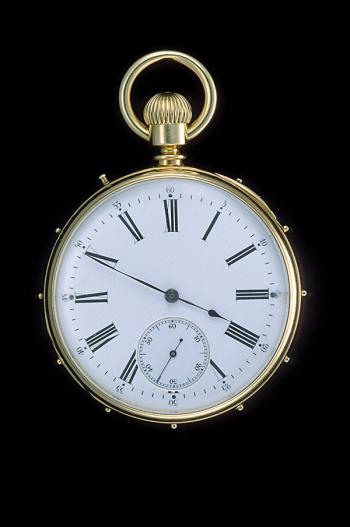
OD dad and pathologist son: Getting it done
An OD is struck by the thought of he and his son looking through their own microscopes, trying to care for their respective flocks but from different angles and perspectives.
In the 1997 movie The Apostle, actor Robert Duvall plays a self-ordained, charismatic, Pentecostal preacher named Sonny. In the movie, there is a moment when Sonny reflects on the theological differences between himself and a Catholic priest: how they are both ultimately trying to care for their respective flocks.
“You do it your way, and I will do it mine. But we get it done, don’t we?” Sonny says.
I thought about that scene a few months ago when I received a message from my oldest son, a resident physician in pathology. It contained a picture of a sample he examined under a microscope during a surgical pathology rotation—de-identified of any personal health information (PHI), of course.
Since he sent it to me, I figured it was eyeball related, and so I set about deciphering the cross section of hematoxylin and eosin (H&E)-stained tissue. He had marked the areas of interest with green dots. A few seconds later, he sent me a helpful follow-up caption that read, “Some cool corneal neovascularization.”
Indeed, it was. The reddish lumens of the invading blood vessels stood out like a microscopic archipelago in a pink stromal sea of collagen fibrils (Figure 1).
Later, we spoke by phone. I asked him if he knew the patient’s diagnosis or why the cornea had been removed.
The sample had come from outside of the hospital. Electronic health records (EHR) being the disparate, siloed sources of cacophony they are, he had no way of reading the original chart or surgical report.
I mentioned a short list of possible differential diagnoses and concluded, in effect, “Keep those cards and samples coming!”
When I hung up, I thought, “Huh, how about that? Collaborating at last.”
Father and sons
Maybe I am a bad “OD dad,” but I never pushed optometry on any of my sons. I took them to the office when they were young, back in the ‘90s before the Health Insurance Portability and Protection Act (HIPPA) became such a tyrannical killjoy. They saw what I did, and I think I made it plain to them how much I enjoyed my profession.
Occasionally, the subject of “what I did that day” came up at the dinner table, and I enjoyed razzle-dazzling them with rapid-fire eyeball jargon.
When they were smaller, they listened with rapt attention, jaws agape in admiration that their dad knew so many big words. Later as teenagers, they were more likely to roll their eyes and say, “Cool, Dad. Now, would you please pass me some more potatoes.”
We traveled as a family on eye care mission trips to Guatemala, and everyone enjoyed them. Still, my wife and I wanted to give our children free rein of which profession they chose. Our younger two sons flirted with health care majors early in college, but eventually, they chose other professional career paths more in line with their natural gifts and talents. My oldest son, a biology major, enrolled in medical school.
I will not lie and say I never daydreamed at least a little about my eldest becoming an ophthalmologist. It was an innocent reverie, a warm and fuzzy image of our father-son OD-MD team on a medical mission trip, working together to restore vision to those who lacked access to quality eye care.
He chose a different specialty instead. Always technically inclined, he gravitated toward the lab and pathology field, fulfilling a prophecy which, in retrospect, was foretold by his early fascination with Legos, building blocks, and the way in which, upon receiving his first microscope, he became engrossed in the finer structures of anything he could get his hands on.
Ultimately, I was simply happy he survived the densely-seeded mine field of medical school education with all his fingers and toes intact and landed in a specialty that he liked and lit his fire.
Later, he sent me another slide image. This time, it was a section of retina with a wisp of vitreous still clinging to it (Figure 2).
Of course, pathologists being the gross-them-out performance artists they are, he also forwarded an image of an enucleated globe that had been sadly annihilated by chemical trauma (I will spare you that one!), and another of a cross section he had taken from it. A piece of detached retina complete with vascular tree fell out and folded over as he sliced and is seen just above and to the right (Figure 3).
Two docs having lunch
Recently, I paged him when I was near his hospital to see if he could grab lunch with me. As I leaned against a brick wall near the sandwich shop scrolling on my phone, I looked up and saw him walking down the sidewalk in the long white coat he had worked so hard to earn.
“Huh”, I thought, “How about that? Here comes Dr. Brown, The Younger.”
I remembered Guatemala and reflected on how far we both had traveled to arrive at this crossroad.
During lunch, he told me about his current rotation, which was transfusion medicine. He pulled at his tie a bit, chafing at the collar.
“I have to wear this right now because I’m out on the ward seeing patients sometimes,” he said.
He explained that the transfusion medicine service was providing convalescent plasma as part of the multidisciplinary team treating coronavirus disease 2019 (COVID-19) patients and how hard it was to keep the most severely ill patients alive, even with state-of-the-art care.
Until that moment, I had no idea he was doing that, too. Our present crisis is truly an “all hands on deck” call to action.
I hope to have more “lunch and learns” like this in the years ahead. I am struck by the paradox of us, a pair of doctors looking through our own microscopes, trying to care for our respective flocks but from different angles and perspectives.
He sees it his way, and I see it mine. But we get it done, don’t we?
Newsletter
Want more insights like this? Subscribe to Optometry Times and get clinical pearls and practice tips delivered straight to your inbox.










































